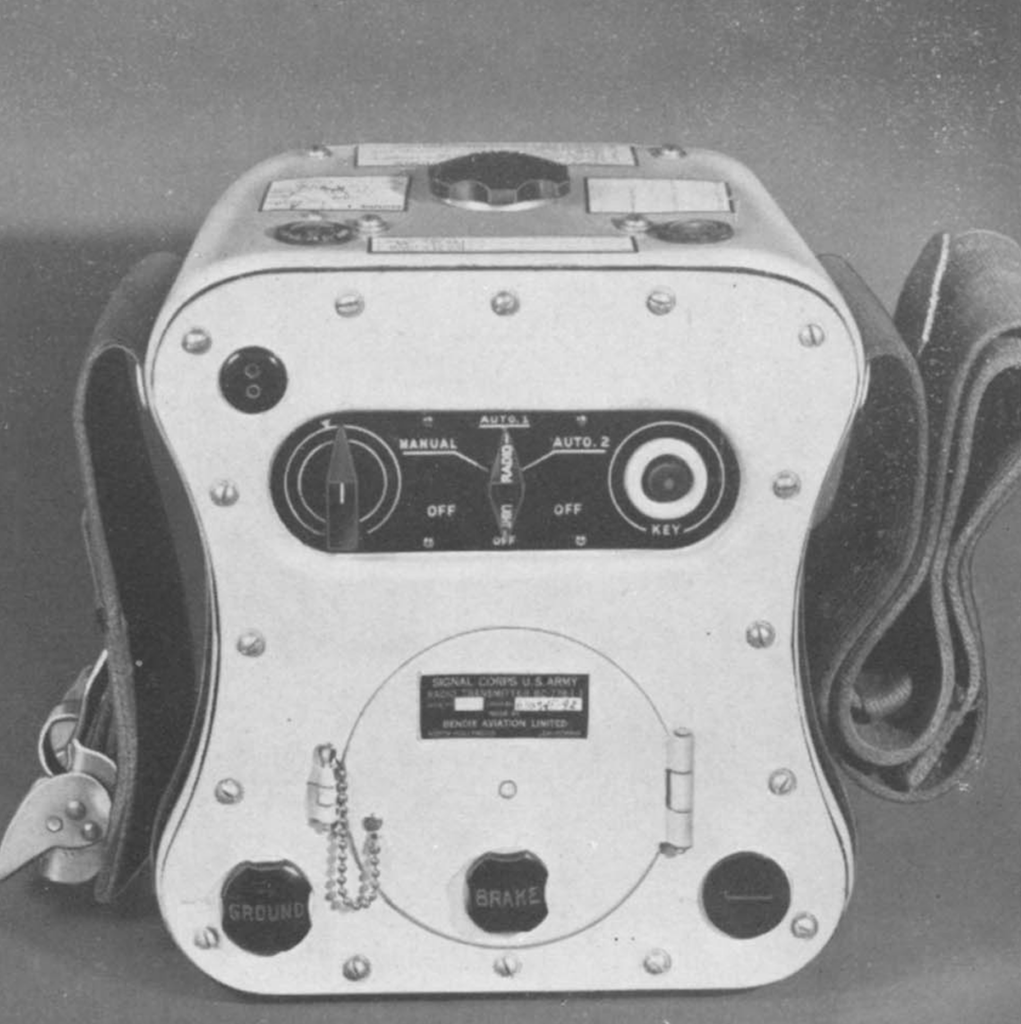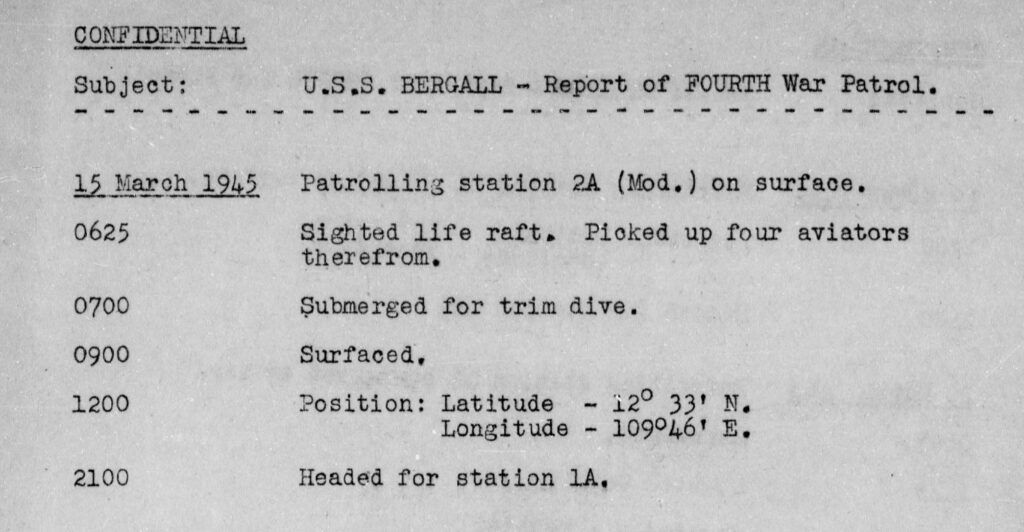Interactive map of the ditching and rescue details of B-25 43-36190 in March 1945.
I recently received digital copies of the official histories of several WW2 groups from AFHRA at Maxwell AFB in Alabama. One was the official history of the 309th Bomb Wing, also known as 2nd Air Task Force, part of the Advanced Echelon of the 5th Air Force during WW2. These documents had been microfilmed after the war and to make them more accessible, they have since been copied to a digital format so that they can be delivered by download or on CD.
Until now, my documentation regarding the ditching of B-25 #43-36190 off the coast of Indochina consisted of a brief mission report and a Missing Air Crew Report dated a few days later. The mission report mentioned that five of the 6 crewmen were observed to be in rafts or in the water. Additional pages attached to the MACR had an inclosure updating the crew’s status after they were recovered. There were no details of the recovery method.
While browsing through the hundreds of pages of 309th Bomb Wing documents, my eye was drawn to a page that had “501st Squadron” in the title line. Reading the next four pages, I found that it was an interview with Lt. Joe Groves, the navigator of #190 on the day it ditched in the South China Sea. His statement filled in many of the missing details of their time in the water, their rescue and the fate of the two men who did not survive. The document seems to have been written as a “what went right, what went wrong, what could be done better” guide to improve the chances of aircrews being rescued by a submarine.
On March 11, 1945, six airplanes of the 501st Bomb Squadron, 345th Bomb Group took off from San Marcelino, Luzon to attack enemy merchant vessels in the shipping lanes from Cape Batangan and Tourane Bay (Da Nang) off the coast of Indochina. Several enemy ships were attacked in Tourane Bay A tanker was sunk and three freighters were damaged during the raid but while lining up over Tourane town for a second pass on a target, airplane #190 was hit by A/A which ruptured a fuel line behind the pilot. The left engine then began to lose power. After completing the run, the pilot headed the stricken airplane toward Discovery Reef, the designated Catalina rescue point for the area, about 550 miles to the southeast.
About twenty minutes later, #190 was ditched in the sea because it could not maintain altitude. Another 501st airplane circled the crash site until a rescue Catalina was contacted. The Cat attempted to land in the rough seas but was was damaged during the attempt and aborted the landing. Before leaving the scene, the Catalina circled the downed crew, dropped a larger life raft along with a Gibson Girl radio and alerted submarine rescue.

From Lt. Groves’ statement, the radio operator never escaped from the sinking airplane and the co-pilot disappeared after being accounted for on the surface. The surving four crewmen spent the next four days in their life raft, operating the Gibson Girl radio in the hope of contacting a submarine. They found that most of the survival rations had been spoiled by inadequate packaging and contamination with salt water so they rationed what little food and water they had severely. From the details of his report, it is apparent that the aircrew was not well prepared for ditching in the sea, were not well trained in how to contact rescue assets, and that the survival rations were not packaged robustly enough to endure harsh handling and conditions.
In the early morning hours of the fifth day, they heard diesel engines and took the chance of flashing the light on their Gibson Girl. A few hours later, they were safely aboard the USS Bergall. After several days, the two officers, McGrane and Groves, were transferred to another submarine, the USS Blueback, then to the submarine USS Blennie, for the trip to Subic Bay, Luzon. The enlisted crewmen, who were more severely wounded, would stay on the Bergall while it finished it’s patrol and returned to Perth, Australia in mid-April.

While researching this post, I was fortunate to find copies of the patrol reports for all three of the submarines involved in the rescue of the crew of #190. Reading through them indicated that they were often detailed to be the rescue sub on stand-by and that their participation in downed aircrew searches was more than a just a chance occurence.

In the interactive map at the top of this post, locations concerning the aircraft crew and geographic locations mentioned in the various mission documents are denoted with white map dots. Yellow map dots indicate the noon locations of the USS Bergall for the period March 7 – 26, 1945. The map dots were placed by using the geographic coordinates right out of the mission documents. I did not attempt to apply an offset to them since I had no idea of the projection or coordinate system of those old maps. While that method does not provide any amount of absolute accuracy, it does put the map dots in the general area of the activity, especially when corroborated with the text of the reports. The Bergall locations are all clustered off Cape Varella, described as the “easternmost point of Vietnam”, which is mentioned frequently in the patrol report.
During their time in the water, the four survivors had drifted and paddled more than 200 miles to the south of their ditching location.
